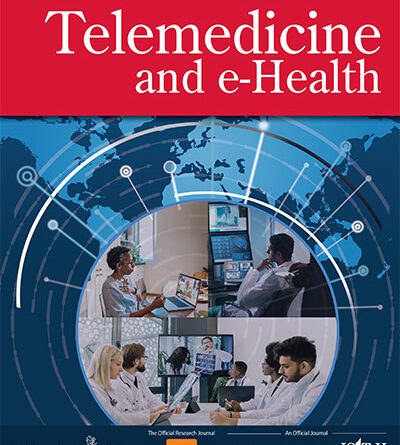Going With the Flow or Changing Lanes
As school has started back up, vacations are mostly over, and my pastime—college football—is back. We are slowly but surely going back into the office, in some cases by mandate; it seems like we are just going with the flow. Routine, day in and day out, can lead to solving problems and accomplishing our tasks, but what if we changed lanes? Might we discover new and innovative ways of doing things?
We are all very familiar with interstate driving. Beginning with that first driver’s training class when we were teenagers, we yearned to borrow our parents’ car and get on the road. Of course, freeway driving can be frustrating and challenging for many. You may be stuck in traffic. There are rules to follow. There can be impediments in the road—debris, or even a deer! Those who live in large cities know that the open road is hard to find, traffic wise, but when you find a lane, you hit the gas and off you go.
This analogy can be similar to our normal daily routines. We may be in the right lane and either cannot get into the passing lane or we are not sure of what will happen if we do. This may be an overly simplistic example, but after 30+ years of being in this field of telemedicine, there are a whole group of individuals who go with the flow and do not want to change lanes. Working in government, in my case NASA, and in academic medicine, I can assure you the first is in the fast lane with lots of safety belts, and academic medicine, depending on where you are, does not really like to change; too many egos and not enough creative thinkers. Those individuals are not in the passing lane!
We know change came abruptly with the public health emergency; many adapted as I have posited here and as the literature, and the lay press can attest, there are those who are retreating. They moved back into the slow lane. While in the slow lane you can see change all around you, but if you change lanes, you can get to your destination faster. If it is a two-lane road, passing can be challenging. You have to give some thought before you commit to pass someone. This kind of philosophy may impede our ability to move forward and innovate.
If we consider the rapid rise of the technology we are all accustomed to using, we know change is inevitable. The university where I work has gone cashless. It is either an app or credit card for coffee or a sandwich. We have to alert our students and faculty for that matter of the challenges of tools like the Large Language Models chatbot “Chat Generative Pre-trained Transformer (GPT) or simply ChatGPT.” There was a time when a manuscript had to be written with source material only available in a library. Remember the card catalog and the library stacks—floors of books, periodicals, and journals? Today, we use search engines to find source materials, which is beneficial. But using an artificial intelligence (AI) capable system like ChatGPT can be troublesome if not understood and used correctly.
Ventura et al. discuss AI chatbot use in emergency medicine and its profound implications.1 While the possibilities are endless in clinical applications, education is another paradigm where it can add value. Kung et al. discuss the ChatGPT performance on the US Medical Licensing Exam, where it demonstrated a high level of concordance in all three steps of the exam.2 ChatGPT is also used in medical research. Ruksakulpiwat et al. discuss current and future directions of ChaGPT where they not only posit on its potential but also comment on ethics, integrity, accuracy, and originality.3 De Angelis et al. discuss the “infodemic” threat to public health and the need for policies to ensure integrity and accuracy of data and information.4
My point here is not to dive into AI and the various tools it can bring to our field, but to alert our community of the challenges they bring as we change lanes. If we never change lanes, we do not innovate. If we do not explore, then we do not discover. If we go with the flow, we may be successful but to be exceptional, creative, and contribute to science and society, we must change lanes.
What Is In This Issue
Over the nearly 30 years of this journal and the 18 years that I have served as the editor, it has amazed me that the number of submissions worldwide and their eventual acceptance has continued to grow. This issue contains manuscripts from Australia, Brazil, China, Germany, Jordan, Spain, Taiwan, Turkey, and the United States. While you have seen the work from researchers from several of these countries, some are new, and they bring excellent work to the journal. In addition, there are several manuscripts on COVID-19.
REFERENCES
- 1. . Artificial intelligence chatbots and emergency medical services: Perspectives on the implications of generative AI in prehospital care. Open Access Emerg Med 2023;15:289–292; doi:
10.2147/OAEM.S420764 . Crossref, Medline, Google Scholar - 2. Performance of ChatGPT on USMLE: Potential for AI-assisted medical education using large language models. PLoS Digit Health 2023;2(2):e0000198; doi:
10.1371/journal.pdig.0000198 . Crossref, Medline, Google Scholar - 3. . Using ChatGPT in Medical Research: Current status and future directions. J Multidiscip Healthc 2023;16:1513–1520; doi:
10.2147/JMDH.S413470 . Crossref, Medline, Google Scholar - 4. ChatGPT and the rise of large language models: the new AI-driven infodemic threat in public health. Front Public Health 2023;11:1166120; doi:
10.3389/fpubh.2023 . Crossref, Medline, Google Scholar


